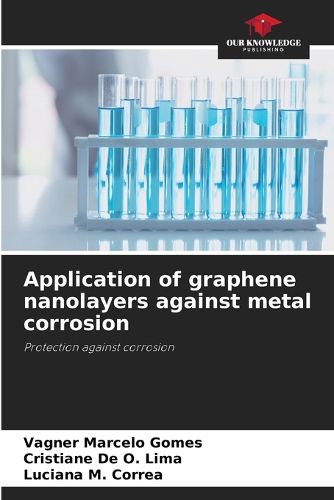Readings Newsletter
Become a Readings Member to make your shopping experience even easier.
Sign in or sign up for free!
You’re not far away from qualifying for FREE standard shipping within Australia
You’ve qualified for FREE standard shipping within Australia
The cart is loading…






This work proposes an evaluation of the passivating capacity of Graphene Nanolayers (NG) when adsorbed onto the surface of copper, aluminum and iron plates through deposition with low boiling point organic solvents. To do this, it was necessary to produce graphene experimentally by chemical exfoliation, starting from powdered graphite. The deposition of the graphene nanolayers on the metals was carried out using the adsorption method, where the organic solvents tested were ethyl acetate, chloroform and ethyl ether. Afterwards, corrosion attacks were simulated with 6mol/L sulfuric acid and a surface revealing agent for each metal evaluated (copper: solution containing 5g of iron III chloride, 30mL of concentrated hydrochloric acid and 100mL of distilled water; iron: 10% alcoholic nitric acid solution and aluminum: 0.01mol/L sodium hydroxide solution). The corrosion test also assessed the influence of temperature on the fixation of graphene nanolayers by exposing some coated metals to 1000 degreesC for 30s.
$9.00 standard shipping within Australia
FREE standard shipping within Australia for orders over $100.00
Express & International shipping calculated at checkout
This work proposes an evaluation of the passivating capacity of Graphene Nanolayers (NG) when adsorbed onto the surface of copper, aluminum and iron plates through deposition with low boiling point organic solvents. To do this, it was necessary to produce graphene experimentally by chemical exfoliation, starting from powdered graphite. The deposition of the graphene nanolayers on the metals was carried out using the adsorption method, where the organic solvents tested were ethyl acetate, chloroform and ethyl ether. Afterwards, corrosion attacks were simulated with 6mol/L sulfuric acid and a surface revealing agent for each metal evaluated (copper: solution containing 5g of iron III chloride, 30mL of concentrated hydrochloric acid and 100mL of distilled water; iron: 10% alcoholic nitric acid solution and aluminum: 0.01mol/L sodium hydroxide solution). The corrosion test also assessed the influence of temperature on the fixation of graphene nanolayers by exposing some coated metals to 1000 degreesC for 30s.